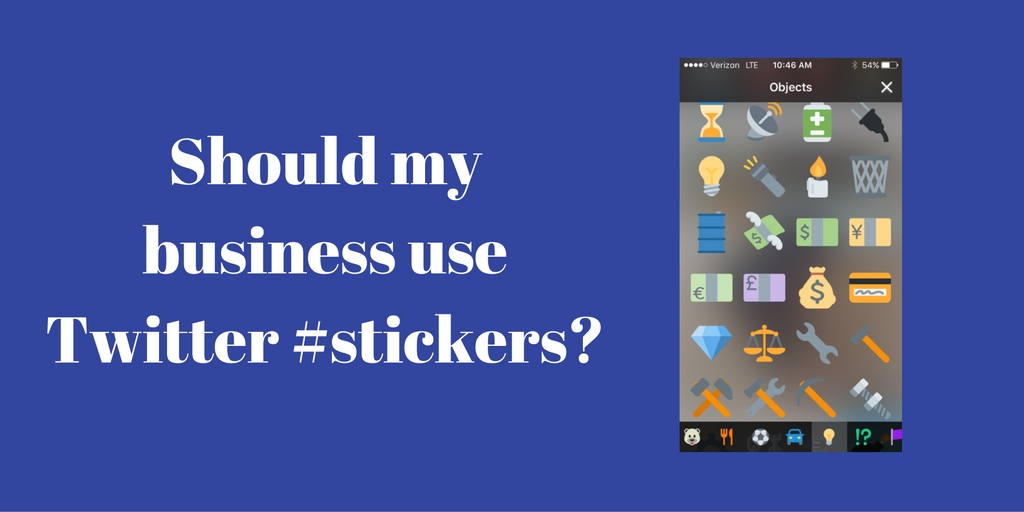
by Fronetics | Aug 8, 2016 | Blog, Content Marketing, Marketing, Strategy

B2B marketers who meet more often to discuss and evaluate their content marketing strategy report success at much higher rates than those that meet less frequently.
Do you feel your content marketing is producing results? Only 30% of B2B marketers say they feel effective, and a shocking 55% admit they do not actually know what content marketing success looks like.
If this sounds familiar, take a note from the most effective B2B marketers: Meeting more often can improve content marketing performance.
Another meeting? Say yes for success
We all have been guilty of thinking, “Great. Another meeting to squeeze into my schedule.” But the B2B Content Marketing 2016: Benchmarks, Budgets, and Trends – North America found some interesting correlations between content marketing effectiveness and frequency of meeting. For instance:
Meeting daily or even weekly improves content marketing results.
61% of the most effective B2B marketers meet daily or weekly with their content marketing team, either virtually or in person.
Meeting more often is time well spent.
Teams that meet daily or weekly find the meetings to be more valuable (70% of respondents) than those who meet less often — like biweekly or monthly (49%). But, only 36% of the content marketing professionals surveyed met once per week, and only 8% met daily. And you guessed it: Those were the teams that reported having the most success with their content marketing.
Meeting strategies
There is more to success than simply holding a meeting, of course. Time spent around the conference table is not going to bring results unless you are asking the right questions with keeping eyes on your content strategy.
What are the new challenges the team is facing? What is happening in the news or industry that might affect or interest your audience? How is your audience responding to recent content? There must be more to regular meetings than coffee and bagels.
Equally important is ensuring the team has a clear vision of your goals and benchmarks. The greater the team’s understanding of what success looks like — clearly defined objectives, expectations, and your content marketing goals — the more effective they can be at their job.
Things to discuss about your content strategy:
- Purpose: What is the goal or objective the team is striving for from content marketing efforts? More leads and increased brand recognition are common examples.
- Audience: Who is your target audience, and what are their needs, interests, and concerns? Where do they consume content (e.g., LinkedIn, blogs)? When do they visit those channels?
- Tactics: What platforms are you using for distribution, and how do they work together? Is there an email campaign as well as daily Facebook, Twitter and Instagram posts, for example? Are images important for results?
General discussions to include:
- Open-topic communication: Tap into knowledge from all members of the team to generate ideas, information, and data for content creation. Open discussion can bring insight and fresh angles of approach.
- Ways to improve and reach objectives: Fresh ideas are as important to the team as fresh content. What could you be doing better? Should you be measuring something that you’re not? Are there new technologies or tools that you should try? Every team member should have a voice in how to best execute or improve your content strategy.
Related posts:

by Fronetics | Aug 4, 2016 | Blog, Content Marketing, Marketing, Social Media

Add stickers to your photos on Twitter to join in on real-time conversations about trending topics and to grow your audience.
Twitter announced at the end of June that it would be rolling out a new feature called #stickers. Twitter stickers are a visual twist on a hashtag, meaning you can add them to the photos you tweet and be connected to the community using the same sticker. Users can click a sticker to see other tweets tagged with the same image.
You can use multiple stickers (up to 25), place them anywhere on your photo, and resize and rotate them. There are hundreds to choose from, organized by categories, including:
- Accessories (e.g., hats, sunglasses)
- Smilies and people
- Animals and nature
- Food and drink
- Activity (e.g., sports equipment, instruments)
- Travel and places
- Objects
- Symbols
- Flags
Why would my business use Twitter stickers?
Twitter suggests, “Use [stickers] to share what you’re doing or how you’re feeling, to show support for a cause, or to just add some flair.” While their primary intention may be fun, Twitter stickers should pique businesses’ interest because they are searchable. And anytime something is searchable, that means it is another opportunity for potential customers to find you.
By using a sticker on one of your tweets, you increase your audience for that tweet in the same way that you do when using a hashtag. People who search by the stickers you use will see your tweets.
Imagine the potential! Medals or sports icons during the Olympics, weather stickers during extreme elements: millions of people will be using and searching these images. Find clever ways to relate Twitter stickers to your photo content, and you’ll strike a chord with an enormous audience.
Also, don’t discount the value of showing some of your brand personality through social media. Having fun with Twitter stickers can give your followers an idea of what your company is all about, show the human face behind the company name, and help them connect with you.
How do I add a sticker?
Stickers are now available to all iOS and Android users. Here’s how to add a sticker to your photo:
1) Tap the Tweet compose icon.
2) Tap the camera icon to take a photo or to select one from your camera roll.
3) Tap the sticker icon (a smiley face) on the bottom right-hand corner of the selected photo to launch a library of stickers. Say I wanted to tweet this photo of my dog:

4) Tap your selected sticker(s). Once placed on your photo, hold and drag the sticker with your finger to move to your desired position.

5) To tilt, enlarge, or shrink a sticker: Place two fingers on either side of the sticker and turn the sticker clockwise or counterclockwise to rotate, or slide your fingers apart or together to resize.
6) If you’d like to remove a sticker from a photo, press and hold on the sticker, then drag it to the bottom of your screen until the trash can icon appears.
Here is what the finished product looks like:

Related posts:

by Fronetics | Aug 3, 2016 | Blog, Content Marketing, Marketing

Here are some guidelines on what content marketing might cost your business and why you need each element to be successful.
Content marketing can be a game-changing strategy for companies looking to increase brand awareness, improve lead-generation efforts, and grow their business. But sticker shock can prevent some from pulling the trigger — especially when an organization is unsure how to measure ROI.
Content marketing will require an investment in services that are not cheap (writing, design, social media management, etc.) or a major time commitment from your own human resources. That being said, the more dollars or resources you throw at it will not necessarily ensure greater success.
To find the right pricing for your content marketing, it’s important to understand what you are paying for. Here are some guidelines for how much content marketing should cost (if you’re doing it right).
A pricing breakdown
The right content, published at the right time, reaches buyers who are looking for products or services like yours and informs them about your business. That, in turn, entices them to become customers.
Here’s the rub: You cannot just throw any old content out there and expect it to work. Here is what you need:
1) A data-driven inbound marketing strategy
This initially may cost around $20k. That sounds like a lot, but here’s why it is so important.
Research proves that content marketing is drastically more effective when it is 1) backed by a strategy, 2) the strategy is documented, and 3) a designated person is leading the strategy. Whether created by an in-house team or an outsource partner, your strategy should be driven by data, and should include these vital components:
- Buyer personas and journey: Who your potential customer is and what steps they take to research, evaluate, and decide to buy
- Content mapping and demand generation: What topics appeal to your customers? How and when should you deliver content? What channels reach customers best?
- Conversion and scoring leads: How to optimize lead-conversion rates and evaluate leads throughout the buyer journey; identifying optimal timing for sales calls
- Goals and KPIs: Define what success looks like and how to measure progress
2) Content marketing talent
Human resources may cost $5K-$10K per month. You need a team of skilled writers, graphic designers, and social media managers who can produce quality content, on a regular basis, and distribute it effectively.
Why can’t you just have the intern do it and save some cash, you ask? When it comes to content, you get what you pay for. Consider that 27 million pieces of content are shared every day. That means consumers can afford to be picky about the media they consume. If they find your content lacking in quality, substance, or appearance, they simply won’t read it. You might as well not have written it.
For your content to be effective — meaning your content attracts your target audience and drives profitable customer action — it must stand out, really stand out, among the masses. For that, you need a professional hand.
3) Lead management, marketing software and analytics
This may cost about $10k per month. It includes marketing automation software, like HubSpot, as well as a skilled manager(s) to provide insight and reports on content performance. This way your organization can effectively track leads, evaluate what is working, and adjust your strategy as necessary to ensure optimal performance.
Return on investment
If you’re still uncomfortable with these numbers, keep these in mind: Content marketing costs 62% less than traditional marketing and generates about 3 times as many leads.
Content marketing is valuable in growing any business. But remember that getting your return really does require making that investment.
Related posts:


by Fronetics | Aug 2, 2016 | Blog, Content Marketing, Marketing, Strategy

Content marketing can help with lead generation and nurturing, but your business still needs a solid sales staff to close deals.
Content marketing helps generate a steady influx of quality leads and provides relevant information to prospects as they move down the sales funnel. Content can even help close a deal.
But forget any notion about content marketing replacing the work of your sales staff. The two must work together to convert leads into customers.
Even quality leads do not typically turn into sales on their own. You need a sales staff to take those opportunities and cultivate them into new business.
What content marketing does vs. your sales staff
Content marketing and sales staff provide different touch points for leads at distinct stages of the buying cycle. Here are a few examples:
Forming a relationship
- Content marketing opens up dialogue with potential customers. Often the first signs of customers’ interest appear after they read one of your blog posts, when they open and click through an email, or they share your company’s posts on social media channels.
- Your sales staff keeps that positive contact going to the next level. They develop it into a conversation. That person who read your blog post now has a relationship with a person in your company.
Providing information
- Content marketing can reach a potential customer early, while they are looking for solutions. B2B buyers report spending more time conducting research, using more expert content such as vendor websites, user reviews, and social media, before making a purchase. Your business should be producing content in order to make the short list of buyers who are looking for products and services like yours.
- Your sales staff answers those important first questions. When a customer reaches out with a query, s/he is likely 60% through the sales process. The customer has done a fair amount of research, and the sales rep must speak specifically to the customer’s needs — in a way that generic content can’t — to keep them interested and moving down the funnel.
Advocating for your brand
- Content marketing increases brand awareness for your business. It helps elevate your brand position within the industry and keeps your business top of mind, even when potential customers aren’t ready to make a purchase.
- Your sales staff is the advocate for your brand when a customer is preparing to make a purchase. They should be proactive in pursuing business when customers show interest in your content or when they reach out with questions. They drive dialogue and get to know customers and how your business can help them.
The content marketing, sales staff partnership
Curating and creating great content will generate quality leads for your company. But, your sales staff is vital to building relationships with potential customers and closing the sale.
Related posts:

by Fronetics | Jul 29, 2016 | Blog, Content Marketing, Marketing, Strategy, Supply Chain
Here I share some of our best performing content from the first half of this year.
Auditing your content and adjusting your strategy is an important part of an effective content marketing program. I like to do an in-depth look at how our content is performing every six months.
As I was evaluating our most popular articles in the first half of 2016, one of the things that struck me was how well they spoke to our content strategy. The top 10 blog posts reflect the topics that we know are most interesting and valuable to our readers. This reinforces the importance of 1) creating a strategy based on your target audience, 2) developing content around that strategy.
While the list itself is interesting, I think the articles are worth sharing again because of their quality and value. So, in case you missed them, here are our top blog posts from the first half of 2016.
Fronetics’ 10 most popular supply chain articles in 2016 (so far)
1) Four Supply Chain Companies that Excel at Social Media
These four organizations have it down when it comes to social media. Consistent posts inform and engage their followers. Who are they and what are they doing that is working? Read the full article.
2) Diversity and Leadership: An Interview with Arrow Electronics’ Kendrea Durr-Smith
Kendrea Durr-Smith runs a unique team as director of global trade compliance at Arrow Electronics. Her department works with people of all different cultures and backgrounds, while recent changes at Arrow with respect to trade management and compliance have given her team exciting, new responsibilities. Read the full article.
3) Top Logistics and Supply Chain Blogs of 2016
Companies in the supply chain and logistics industries are realizing the enormous benefits that a quality content marketing strategy, including regular posts to a company blog, can offer. These three companies, in particular, are publishing content that not only drives business to their websites, but also fuels conversation about industry best practices, trends, and issues. Read the full article.
4) Shipping company Eimskip Places a High Value on Culture and Art; It’s Paid Off
Iceland’s oldest shipping company regularly hosts local artists on voyages between its headquarters in Portland, ME, and Reykjavik. The practice reflects Eimskip’s great efforts to integrate itself into all aspects of the communities in which it operates. Read the full article.
5) 3 Key Tips for Creating Valuable and Compelling Content
This guest post by Jennifer Cortez, director or marketing communications at Transplace, discusses her company’s approach to content development. Read the full article.
6) Getting to First Base with a Social Network
Guest author Tania Seary is founder of Procurious, a global online network for supply chain and procurement professionals. In this article, she discusses some of the key decisions leadership made along the way to build the company from the ground up. Read the full article.
7) Social Media Facts for B2B Companies
Understanding how users are engaging with social media is important for businesses hoping to reach consumers with these tools; however, the information is hard to track down. Here are eight of the most recent, relevant statistics and facts about social media for B2B organizations. Read the full article.
8) Amazon Loves Logistics? The E-Commerce Giant’s Next $400B Opportunity
Amazon’s recent activity suggests it plans to move into the logistics space as a 3PL provider. This article examines why such speculation is valid and how it might disrupt the estimated $400 billion fulfillment market. Read the full article.
9) EBN’s Hailey McKeefry on Women in the Supply Chain Industry
This interview with EBN Editor in Chief Hailey McKeefry examines the gender gap in the supply chain industry in light of her own career path. McKeefry also offers advice to women considering entering the industry. Read the full article.
10) Women in Manufacturing and the Supply Chain: Disparity and Opportunity
A McKinsey & Company report found that diverse companies financially outperform companies that are not diverse by 15%. And in terms of gender diversity, specifically, research shows that when women are in positions of leadership, companies perform better — much better. How can the supply chain capitalize on that information and impact the bottom line? Read the full article.
Runner-up posts:


by Fronetics | Jul 28, 2016 | Blog, Diversity, Leadership, Logistics, Strategy, Supply Chain
In an interview with Kate Lee, Saunders discusses her career in the logistics industry and key issues within the supply chain.

Kelli Saunders is president of Morai Logistics.
The percentage of female CEOs in the Fortune 500 declined from 4.8% in 2015 to 4.2% in 2016. Canada, too, has realized a decline: 8% of the highest-paid executive positions are held by women, down from 8.5%. Research conducted by Gartner in April 2016 finds that for the supply chain industry, “the percentage of women in leadership positions decreases as the corporate ladder rises.”
It was a “fluke” that Kelli Saunders found the supply chain industry. More than 30 years later, Saunders is president of Morai Logistics Inc., an Authorized Agent of Mode Transportation. I sat down and talked with Saunders about her career and her perspective on women within the supply chain industry.
How did you find the supply chain industry?
It was a fluke. I was just out of college and needed a job. I found an ad in our local paper for a telemarketer, and I applied. I was hired as a telemarketing supervisor for a Canadian intermodal marketing company (IMC).
The man who owned the company focused on his employees. He taught us how to read a balance sheet and an income statement. He taught us the difference between added value and value added. And he taught us the industry. He had us climbing into trucks and railroad yards so that we could truly understand the industry.
When his wife sadly passed away, he decided to sell the company. He allowed six of us to become majority shareholders.
Fast forward sixteen years. The company has been bought and sold many times. I’ve stayed with the company through this process. Each time the company changed hands, my role changed, exposing me to different aspects of the business. Six years ago I bought the company back and now serve as president.
Your first boss sounds like he was a pretty incredible person.
He was. And now it is my turn. It’s my turn to give back.
I am a big believer in millennials. Their energy is contagious. I strive to be a mentor to them, and to let them know that they can dream big.
You’ve been in the industry for more than 30 years. What changes have you seen?
The industry is becoming more diverse, and more women are entering the industry. That being said, there is a still a long way to go. A big challenge is getting women and minorities to recognize that the supply chain industry is an option.
Tell me more about this.
Women don’t seem to recognize that there are incredible opportunities in the supply chain industry. The industry needs to do a better job at sharing what is happening — what the industry is all about. People think it is dull and boring; it’s not.
The supply chain industry is not just about getting things from point A to point B. The industry is an entire sophistication of infrastructure. There are so many aspects that we take for granted. Streamlining the chaos within the industry is incredibly rewarding.
How can this problem be addressed?
We need to get out and talk to more people. We need to go into the schools; we need to make connections and have conversations. Companies need to share their stories more widely. It is all about getting the word out there.
What advice do you have for people who do enter the industry?
Surround yourself with the best of the best. This is true when it comes to your colleagues, your employees, your vendors, your clients — everyone. This not only makes life more enjoyable, it has an impact on the bottom line.
Interestingly, 75% of the staff at Morai Logistics are women. This is not by design. By seeking out the best of the best, it just happened.
As a mentor, what advice do you give?
Dress for the job you want, not for the job you have. But I am not talking just about clothes. I am talking about your mental state, your body language, the quality of the work you produce. Visualize the job you want and portray that in all you do.
I also tell people to always be honest, respectful, and ethical. These characteristics are essential.
Getting the right product to the right place at just the right time is a complicated business. Kelli Saunders, CEO of Morai Logistics, understands the complexities and nuances involved in long term sustainability in the logistics industry. This is why the company she leads is the successful multimillion dollar, multinational business that it is today.
Kelli’s experience in the supply chain and logistics field is extensive. During her 30 years in the industry, she has been recognized for her strategic selling, relationship development, and management throughout North America. She started from her humble beginnings as a telemarketing supervisor for a Canadian 3PL provider to creating Morai Logistics Inc.
Since then Kelli has received numerous awards for her expertise in strategic sales. She has shown consistent impact in the industry by being awarded Salesperson of the Year numerous times, and was the former president of the Toronto Transportation Club. As a certified diversity supplier, her company has received WeConnect Canada’s Doing Business International Award and WBE Canada’s Doing Business Award as a woman-owned business.
Aside from assisting her clients with services including warehousing, management consulting and technology services through Morai Logistics, Kelli’s drive also shines through in her other passions.
She is an active member of the Women Presidents Organization, WeConnect International, and WBE Canada. Kelli strives to inspire women by telling her story and sharing her lessons at talks to support fellow female entrepreneurs. She also takes time to enjoy spinning, running, golf, and travelling. Her motivation and drive shows in her company’s performance and inspires her team to succeed.
Related posts:













